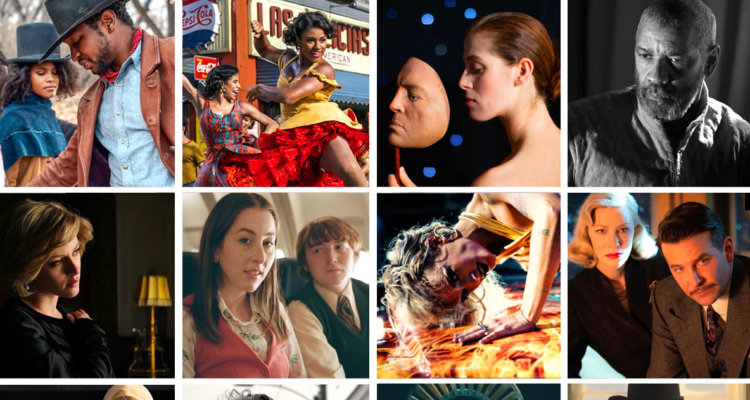“Titane”
Julia Ducournau is a cruel taskmaster. The challenge she sets out for Ruben Impens with “Titane” is multi-pronged: He must shoot it as a body horror movie, as a horny sex work movie, as a tender, loving movie about found families, and he must blend each style, each aesthetic, into one cohesive visual expression. That’s not a nice thing to do to a cinematographer. But Impens happens to be very good at his job. “Titane” goes wild to start out, capturing bloody mayhem and automotive congress with a tight hand on composition, blocking, and tempo. Nothing is lost in Impens’ eye; the full span of Ducournau’s crazy blooms before us, whether it’s her protagonist banging a car or slaughtering houseguests. From that madness, though, he finds intimacy. He finds compassion and surprising warmth. Ducournau’s scope narrows down the further the plot progresses, until the movie comes to feel downright normal, human even. The heartache of Ducournau’s climax sticks. It shouldn’t work, should it? But it does. Her direction is key, and so’s Impens’ photography. – AC
“Dune”
Denis Villeneuve’s adaptation of Frank Herbert’s seminal science fiction novel, so often declared “unfilmable” but in truth simply “uncontrollable,” is immense. That’s why it’s a two-parter. But the film’s immensity is baked into everything from production value to performance, and especially the camerawork. It’s one thing to shoot a picture on a large scale, and another to shoot that picture such that the audience is properly overwhelmed by that scale. “Dune” looms. What Villeneuve either gets “wrong” about Herbert’s text or simply can’t adequately mimic (because the text is itself a colossus), he gets right with DP Greig Fraser’s camera; they linger on the efforts made by the design team to breathe modern life into Arrakis, into the Atreides’ desert stronghold, into Baron Harkonnen and his diseased carcass. Every dollar of the budget is right there in the frame from start to finish. “Dune” is a clumsy movie, but a movie that nonetheless understands its best strengths and how to dazzle with them. – AC
“Passing”
“Passing,” Rebecca Hall’s feature filmmaking debut, is an adaptation of the 1929 Nella Larsen novel of the same name. Hall entrusts cinematography duties to the capable Eduard Grau, for whom black-and-white is more than just a demarcating line between the past and the present. It’s an extra degree of complication to mix in with the complicated matters of race and identity in 1920s New York City. For Hall, a white woman, to tackle “Passing”, a story about Blackness, takes chutzpah. If the film’s direction is overly mannered, and if the emotions lying under its surface are set to simmer for the whole duration, Grau’s cinematography is mellow, cool, a much-needed tempering element to help even out the wrinkles between construction and sensation. This is a breathlessly gorgeous piece of work. Grau proves that a movie drained of color can be equally as vibrant, if not more so, than the most neon electric cinema. – AC
“The Green Knight”
Medieval mystical acid fantasy – that’s the best way to describe Andrew Droz Palermo’s approach to filming David Lowery’s “The Green Knight.” A take on Arthurian legend as only a guy like Lowery could imagine, “The Green Knight” adds enigmatic character to Welsh folklore while shooting Welsh folklore with appropriate scale. The film is expansive. Palermo gives it volume. Landscapes ranging from sprawling meadows to spooky woodlands to corpse-strewn battlefields to rolling hills that are positively lousy with lumbering giants; pop culture casually applies “epic” to mundane bullshit on a regular basis, but “The Green Knight” truly is epic, and eerie, and mesmerizing, and weird as hell. Palermo has the vision to give the movie a staggering dimension, and the patience to draw out that dimension into a one-of-a-kind cinematic trip. – AC
“The Harder They Fall”
Mihai Mălaimare Jr. knows how to shoot ass-beatings and gunfights. In fact, when he’s called to, he’ll even shoot an ass-beating set in the middle of a gunfight, or an ass-beating doled out with the butt of a gun. “The Harder They Fall” brims over with stylish, bloody violence, filmed with a crisp, shocking clarity by Mălaimare Jr., but Jeymes Samuel’s feature debut orchestrates that violence on a stage set in the manner of the classic American Western: Dusty frontier town thoroughfares and glorious vistas overlooking landscapes that ramble on forever. But “The Harder They Fall” isn’t quite “classic.” It’s more “revisionist.” The act of revision necessitates Mălaimare Jr. incorporate elements of modernized swagger into his cinematography. Sure, the images come through so clearly that you can count all the threads in Regina King’s coat. But it’s how Mălaimare Jr. moves the camera, how he makes an old genre feel new again as easily as changing the camera’s angle. – AC

